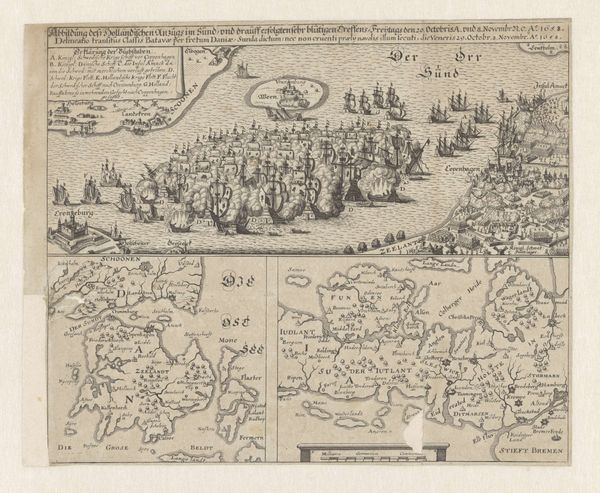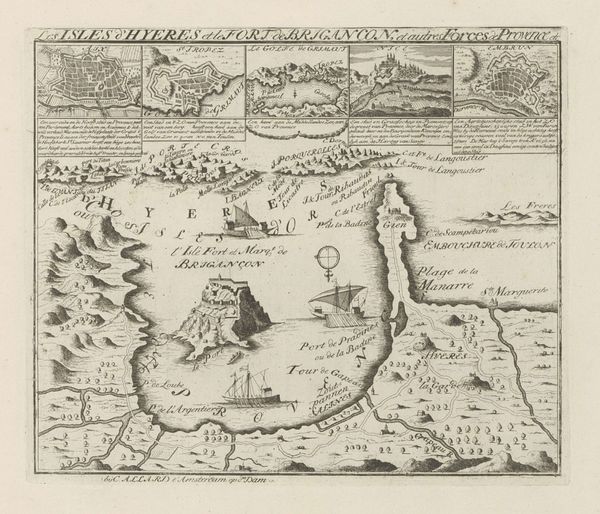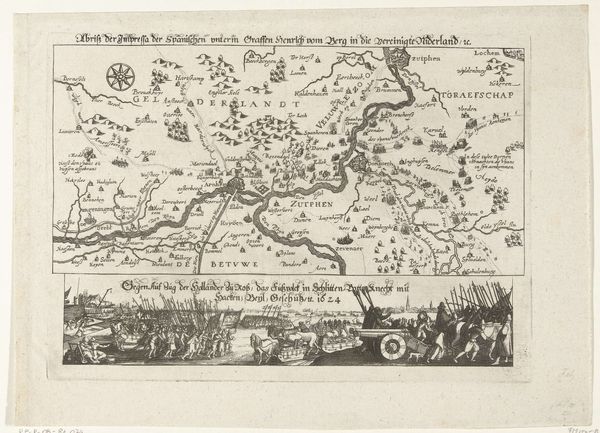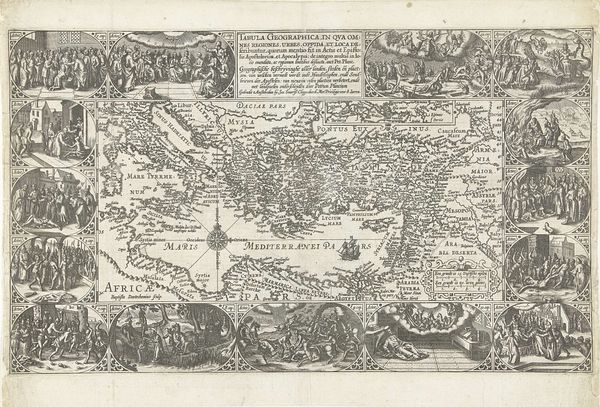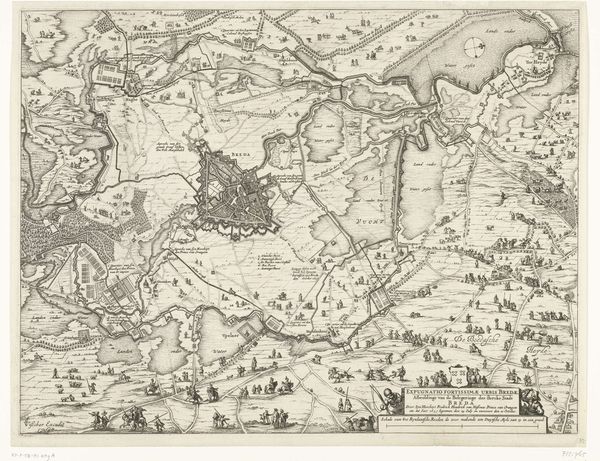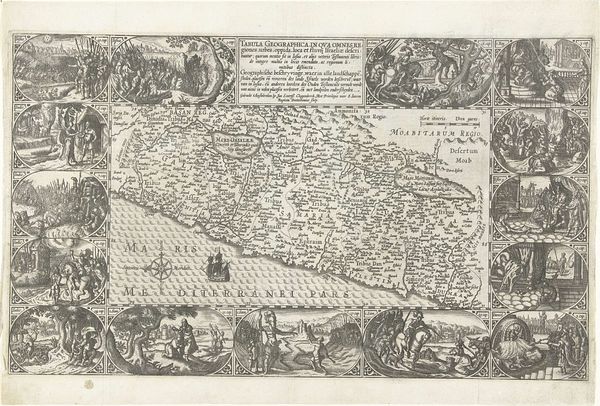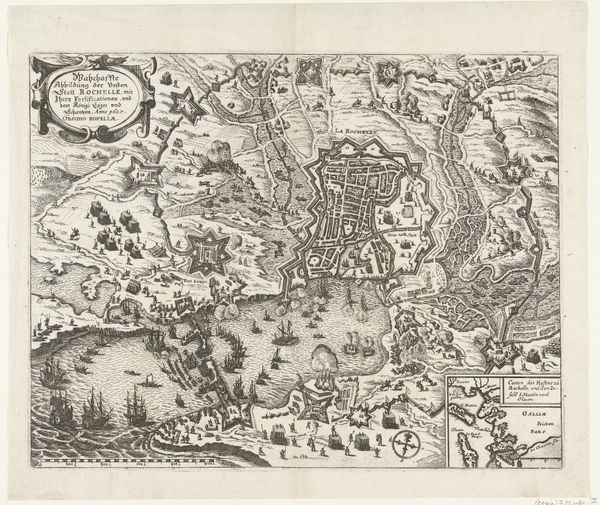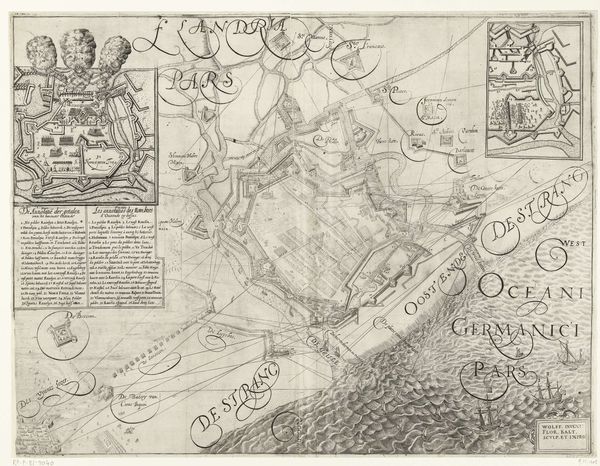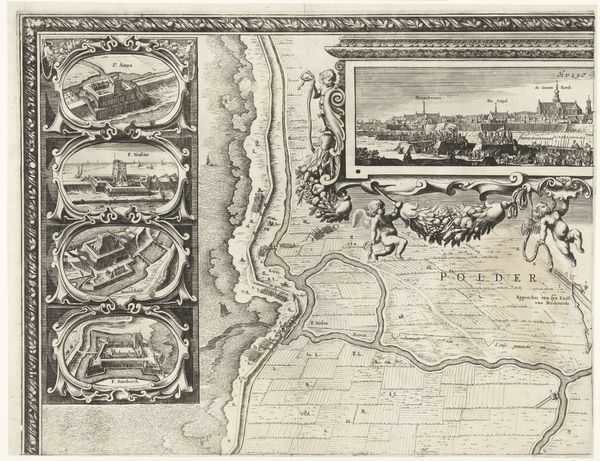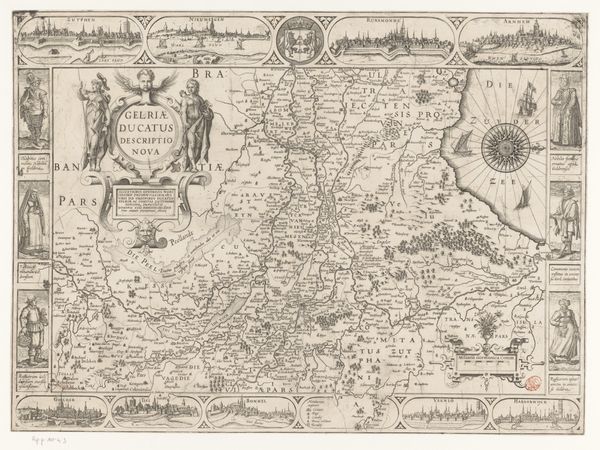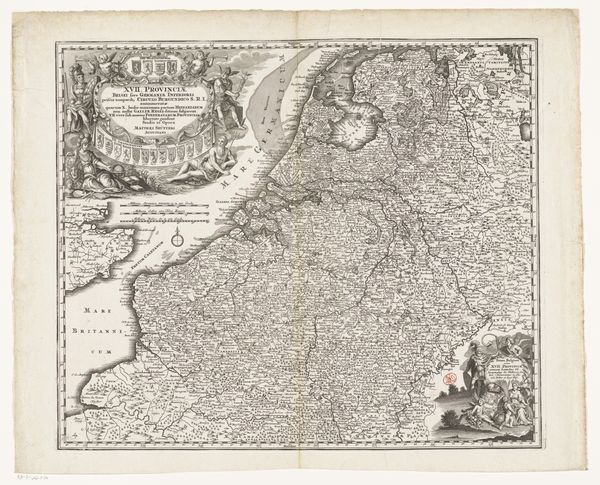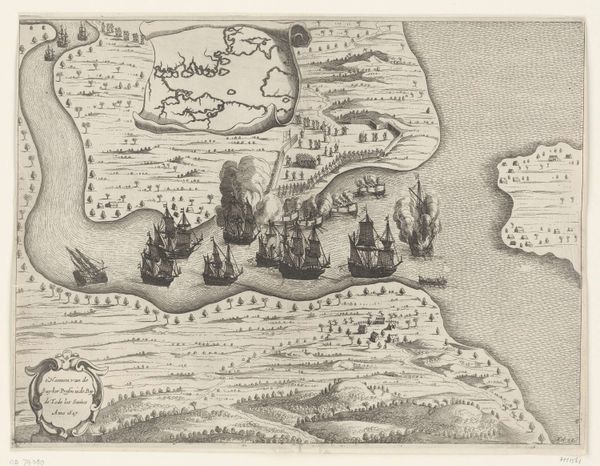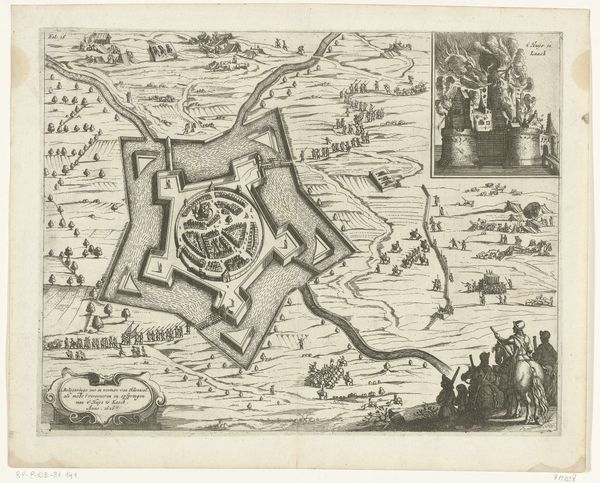
graphic-art, print, engraving
#
graphic-art
# print
#
asian-art
#
old engraving style
#
landscape
#
history-painting
#
engraving
Dimensions: height 290 mm, width 492 mm
Copyright: Rijks Museum: Open Domain
Curator: Stepping into the cartographic world, we encounter "Kaart van Israel en Egypte," a map of Israel and Egypt from around 1604, created by Pieter Bast. The medium here is engraving, a graphic print showcasing a fascinating landscape and historical perspective. What are your initial thoughts as you gaze upon this piece? Editor: Woah, it’s a whole little world encapsulated! Kinda feels like peeking into a time machine, right? I'm immediately drawn to how detailed everything is; I could just get lost wandering through all those tiny cities. Plus, there's this sense of old-world adventure seeping out of it, does that make sense? Curator: It makes perfect sense. Considering the historical context, these maps were not only geographical tools, but also reflections of power and knowledge. They functioned to portray the world as it was understood through a European lens at that time, reflecting colonial ambitions. Think of this representation of the ‘holy land’ as it impacted European perspectives. Editor: That definitely puts a new spin on things. The religious implications were clear in how precise this rendering is! Like they wanted to 'capture' a sense of sacred places. Curator: Indeed. Look closely at the borders surrounding the central map. Notice how they depict biblical scenes? It merges geographic depiction with biblical narrative. This combination solidified the link between the territory, faith, and European cultural identity. This reflects an early modern desire to both understand and control space. Editor: Ah, now I get it! It is both claiming ownership and trying to decipher what the land might represent or even hold for them as a collective. Almost like a visual manifesto, binding geography with destiny and their beliefs. Amazing how something that looks like a simple map can be so layered. Curator: Precisely. Maps are not neutral objects. "Kaart van Israel en Egypte" reveals much about the ambitions, beliefs, and socio-political power dynamics of its time. Understanding these intersectional narratives enhances our experience of the piece. Editor: I’ll say. It went from interesting image to a multi-layered symbol pretty quickly. I’ll definitely carry that sense of context with me now when looking at historical maps; thanks!
Comments
No comments
Be the first to comment and join the conversation on the ultimate creative platform.

